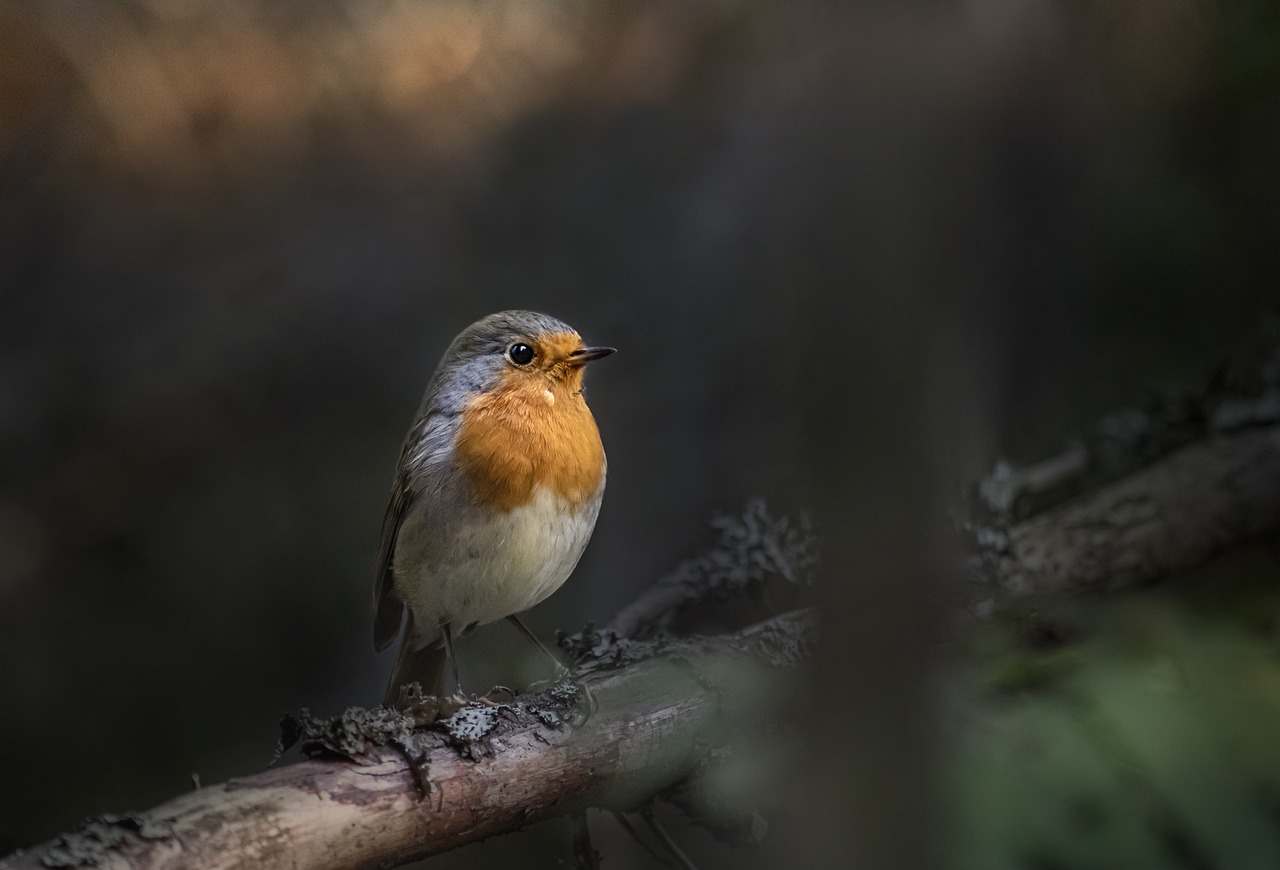Here’s a full and detailed overview of the European Robin (Erithacus rubecula), one of Europe’s most familiar and beloved birds.
🐦 European Robin (Erithacus rubecula)
Taxonomy
- Kingdom: Animalia
- Phylum: Chordata
- Class: Aves
- Order: Passeriformes
- Family: Muscicapidae
- Genus: Erithacus
- Species: E. rubecula
Common name: European Robin
Scientific name: Erithacus rubecula
Identification
The European robin is a small insectivorous passerine bird recognized by its bright orange-red breast and face, bordered by grey and brown plumage. It’s a common garden bird across Europe and an iconic species of wintertime imagery.
- Length: 12.5–14.0 cm
- Wingspan: 20–22 cm
- Weight: 14–21 g
- Plumage:
- Bright orange-red face and breast
- Greyish sides of the neck and chest
- Brown upperparts
- Whitish belly
- Bill: Thin and dark, suited for insect feeding
- Eyes: Large and dark, giving a curious expression
Both sexes look alike, though males may show slightly brighter coloration. Juveniles lack the red breast and are instead mottled brown and gold.
Distribution and Range
The European robin is widespread throughout:
- Europe (from the British Isles to western Russia)
- North Africa
- Middle East
- Western Siberia
Resident populations occur in western and southern Europe, while northern and eastern birds migrate south during the winter.
Introduced populations also exist in New Zealand.
Habitat
The robin inhabits a wide variety of environments, including:
- Woodland edges and clearings
- Parks and gardens
- Hedgerows
- Shrublands and forest undergrowth
It prefers dense vegetation for nesting and open ground for foraging.
Behavior
- Territorial: Especially males, which defend feeding and breeding territories vigorously, even attacking reflections or other robins.
- Song: Rich, melodic, and fluting; males sing year-round, and females may also sing quietly during winter.
- Tameness: Frequently approaches humans in gardens or forests, often following gardeners as they turn soil to catch insects and worms.
- Activity: Active during the day, foraging on the ground or low perches.
Diet
Omnivorous, feeding mainly on:
- Insects and larvae
- Spiders
- Earthworms
- Berries and fruit (especially in autumn and winter)
In cold months, robins visit bird feeders for mealworms, seeds, or suet.
Reproduction
- Breeding season: March to July
- Nests: Built close to the ground in hollows, walls, or dense shrubs; sometimes in unusual places like flowerpots or boots.
- Clutch size: 4–6 eggs
- Incubation: 13–14 days by the female
- Fledging: Young leave the nest after about 14 days
Pairs are monogamous for a season, and many robins raise two broods per year.
Lifespan
- Average lifespan: 2 years
- Maximum recorded: 13 years
High mortality occurs during the first winter due to cold and competition.
Conservation Status
- IUCN Red List: Least Concern (LC)
- Population trend: Stable and common across its range
The species adapts well to human-modified habitats, including urban areas.
Ecological Role
- Controls insect populations
- Disperses seeds of berry-producing plants
- Acts as an indicator of healthy woodland and garden ecosystems
Predators and Threats
- Cats, hawks, weasels, and snakes prey on adults or chicks.
- Harsh winters can cause population declines, though numbers typically recover quickly.
Key Identification Points
| Feature | Description |
|---|---|
| Scientific name | Erithacus rubecula |
| Common name | European robin |
| Family | Muscicapidae |
| Length | 12.5–14 cm |
| Wingspan | 20–22 cm |
| Weight | 14–21 g |
| Diet | Insects, worms, fruit |
| Habitat | Woodland, gardens, parks |
| Conservation status | Least Concern |
Interesting Facts
- The robin is a national bird of the United Kingdom.
- Both sexes sing, unusual among European songbirds.
- Juvenile robins are completely spotty brown, gaining the red breast after their first molt.
- Robins are territorial year-round, even during winter.
- They use song to establish and defend territory both day and night.
Summary
The European Robin (Erithacus rubecula) is a small, bold songbird beloved across Europe for its bright red breast, gentle appearance, and melodic song. Found in gardens, forests, and hedgerows, it symbolizes resilience through winter and is a familiar companion to people across its range. Despite its delicate look, the robin is fiercely territorial and remarkably adaptable, thriving in both wild and urban settings.
Views: 1736
Subscribe to the newsletter:
